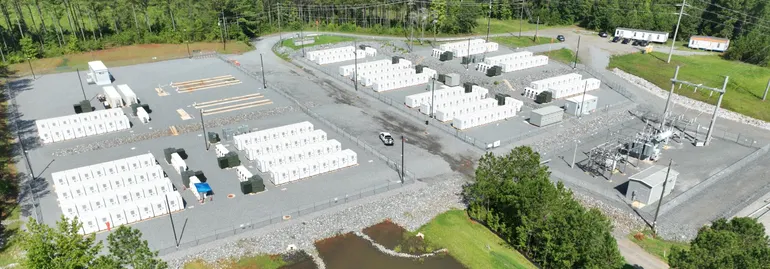Concentrated Solar Power Market to Reach USD 13.0 Billion by 2035 – openPR.com

Concentrated Solar Power (CSP) Market: A Strategic Enabler for Sustainable Development Goals
The global Concentrated Solar Power (CSP) market is projected for significant expansion, with an estimated valuation of USD 5.8 billion in 2025 forecast to increase to USD 13.0 billion by 2035, reflecting a compound annual growth rate (CAGR) of 8.3%. This growth is intrinsically linked to the global pursuit of the Sustainable Development Goals (SDGs), particularly SDG 7 (Affordable and Clean Energy) and SDG 13 (Climate Action). The market’s trajectory highlights a strategic shift towards dispatchable renewable energy sources to ensure energy security and facilitate industrial decarbonization.
Market Drivers and Alignment with Global Goals
The expansion of the CSP market is propelled by several key factors that directly support the SDG framework:
- Supportive Policy and Regulatory Frameworks: Government initiatives, including feed-in tariffs and renewable energy mandates in nations like Spain, Morocco, and the UAE, are accelerating the adoption of CSP technology, directly contributing to SDG 7.
- Advancements in Thermal Energy Storage (TES): The integration of molten salt storage systems transforms CSP into a reliable and dispatchable power source. This addresses the intermittency of other renewables, enhancing grid stability and supporting SDG 9 (Industry, Innovation, and Infrastructure) and SDG 11 (Sustainable Cities and Communities).
- Industrial Decarbonization: A growing number of industries, including manufacturing, chemicals, and food processing, are adopting CSP for process heat and steam generation. This transition from fossil fuels is a critical step towards achieving SDG 12 (Responsible Consumption and Production) and SDG 9.
Technological Analysis and Segmental Contributions to Sustainability
Technology Segments
The parabolic trough segment is anticipated to hold a dominant market share of 52.8% in 2025. Its proven operational history and scalability make it a cornerstone technology for achieving large-scale clean energy deployment under SDG 7. Continuous innovation in this area reflects progress toward SDG 9.
Capacity Segments
Plants with a capacity of ≤50 MW are projected to constitute 41.6% of market revenue in 2025. These smaller-scale installations are crucial for enhancing energy access in emerging economies and for localized industrial applications, thereby promoting inclusive growth and supporting SDG 7 in diverse contexts.
Energy Storage Integration
Projects incorporating thermal storage are set to command 63.4% of the market in 2025. The ability to store and dispatch energy after sunset positions CSP as a viable alternative to fossil fuel-based peaker plants, providing the 24/7 reliability needed for sustainable infrastructure (SDG 9) and resilient communities (SDG 11).
Regional Market Dynamics and SDG Implementation
Asia-Pacific
China is leading global expansion with a projected CAGR of 11.2%, driven by large-scale projects and advancements in molten salt storage. This effort significantly contributes to global climate mitigation targets under SDG 13. India, with a forecasted CAGR of 10.4%, is leveraging public-private partnerships (SDG 17) to drive innovation and cost reduction in its renewable energy sector.
Europe
European nations such as France and the UK are focusing on hybrid CSP-PV systems and industrial process heat applications. This strategy aligns with SDG 9 by fostering industrial innovation and supports SDG 12 by enabling more sustainable production patterns.
North America
The United States is advancing large-scale CSP projects with integrated storage, primarily in the Southwest. These developments are critical for ensuring grid stability and meeting renewable energy targets, directly supporting the objectives of SDG 7.
Competitive Environment and Collaborative Innovation
The market features established leaders like ACCIONA, ACWA Power, and Abengoa S.A., alongside innovative new entrants. This competitive dynamic fosters technological advancement in line with SDG 9. The ecosystem is further strengthened by partnerships between EPC contractors, research institutions, and developers, exemplifying the collaborative approach championed by SDG 17 (Partnerships for the Goals) to accelerate the clean energy transition.
Future Outlook: Key Trends Shaping a Sustainable Energy Future
The CSP market’s trajectory toward 2035 will be defined by trends that deepen its impact on the SDGs:
- System Hybridization: Combining CSP with photovoltaic (PV) and other power sources enhances grid reliability and land-use efficiency, creating resilient energy systems for sustainable communities (SDG 11).
- Long-Duration Energy Storage: Innovations in thermal energy storage will solidify CSP’s role in providing baseload renewable power, a foundational requirement for achieving SDG 7.
- International Financing and Partnerships: Collaborative financing mechanisms will be essential to lower capital barriers in developing regions, ensuring equitable access to clean energy technology as envisioned in SDG 17.
- Industrial Integration: The increasing use of CSP for industrial heat will be a key driver for decarbonizing hard-to-abate sectors, making substantial contributions to SDG 9 and SDG 13.
In conclusion, the growth of the Concentrated Solar Power market is not merely an economic trend but a vital component of the global strategy to achieve a sustainable, low-carbon future. Its capacity for providing reliable, dispatchable, and clean energy positions it as a critical technology for meeting the Sustainable Development Goals.
Analysis of Sustainable Development Goals (SDGs) in the Article
1. Which SDGs are addressed or connected to the issues highlighted in the article?
- SDG 7: Affordable and Clean Energy: The article is centered on Concentrated Solar Power (CSP), a renewable energy technology, and its role in providing clean, reliable, and dispatchable electricity.
- SDG 9: Industry, Innovation, and Infrastructure: The text discusses technological advancements in CSP (e.g., molten salt storage), industrial expansion, and the development of large-scale energy infrastructure (solar thermal plants). It also highlights how CSP is being integrated into industrial processes to replace fossil fuels.
- SDG 13: Climate Action: The article explicitly links the growth of the CSP market to “global decarbonization strategies” and “carbon reduction,” positioning it as a key technology in the fight against climate change by replacing fossil-based power.
- SDG 8: Decent Work and Economic Growth: The significant market growth forecast (from USD 5.8 billion to USD 13.0 billion) and “industrial expansion” point to economic growth and job creation in the clean energy sector. The focus on replacing fossil fuels also supports sustainable economic growth.
- SDG 17: Partnerships for the Goals: The article emphasizes the importance of collaboration, mentioning “public-private partnerships,” “technology partnerships,” “international financing programs,” and “cross-border energy collaboration” as crucial drivers for the CSP market’s growth, especially in developing regions.
2. What specific targets under those SDGs can be identified based on the article’s content?
-
SDG 7: Affordable and Clean Energy
- Target 7.2: By 2030, increase substantially the share of renewable energy in the global energy mix. The article’s entire focus on the projected growth of the CSP market, with a forecasted CAGR of 8.3%, directly supports this target by detailing the expansion of a specific renewable energy source.
- Target 7.a: By 2030, enhance international cooperation to facilitate access to clean energy research and technology, including renewable energy, energy efficiency and advanced and cleaner fossil-fuel technology, and promote investment in energy infrastructure and clean energy technology. The article highlights “government incentives,” “international financing programs,” and “technology partnerships” as key factors driving CSP development and investment.
-
SDG 9: Industry, Innovation, and Infrastructure
- Target 9.4: By 2030, upgrade infrastructure and retrofit industries to make them sustainable, with increased resource-use efficiency and greater adoption of clean and environmentally sound technologies and industrial processes. The article describes how industrial users are “turning to CSP for process heat and steam generation, replacing fossil fuels in energy-intensive industries such as manufacturing, chemicals, and food processing,” which directly aligns with this target.
- Target 9.5: Enhance scientific research, upgrade the technological capabilities of industrial sectors in all countries, in particular developing countries. The text details “collaborative innovation” and advancements in “molten salt storage,” “hybrid CSP-PV systems,” and “heliostat efficiency,” reflecting efforts to upgrade technological capabilities.
-
SDG 13: Climate Action
- Target 13.2: Integrate climate change measures into national policies, strategies and planning. The growth of CSP is attributed to “policy frameworks that promote renewable energy adoption” and its role in “global decarbonization strategies,” indicating that countries are integrating climate action into their energy planning.
-
SDG 8: Decent Work and Economic Growth
- Target 8.4: Improve progressively, through 2030, global resource efficiency in consumption and production and endeavour to decouple economic growth from environmental degradation. The article discusses how CSP enables “cost savings and carbon reduction” for industries, demonstrating a pathway to decouple industrial production from fossil fuel dependency and environmental harm.
-
SDG 17: Partnerships for the Goals
- Target 17.17: Encourage and promote effective public, public-private and civil society partnerships, building on the experience and resourcing strategies of partnerships. The article explicitly cites “Public-private partnerships” in India and “technology partnerships” in China as key drivers of innovation and market growth, providing clear examples of this target in action.
3. Are there any indicators mentioned or implied in the article that can be used to measure progress towards the identified targets?
- Renewable Energy Market Growth: The projected market growth from “USD 5.8 billion in 2025” to “USD 13.0 billion by 2035” and the “CAGR of 8.3%” are direct quantitative indicators for measuring the increase in the share of renewable energy (Target 7.2).
- Investment in Clean Energy: The financial figures mentioned above also serve as an indicator for investment in clean energy infrastructure and technology (Target 7.a).
- Adoption of Clean Technology in Industry: The article’s mention of CSP being used for “process heat and steam generation” in manufacturing, chemicals, and food processing is a qualitative indicator of the adoption of clean technologies by industries (Target 9.4).
- Rate of Technological Innovation: The development and market share of specific technologies, such as the “63.4% share” for storage-enabled projects and innovations in “molten salt systems,” can be used as indicators to measure progress in technological capabilities (Target 9.5).
- Formation of Partnerships: The explicit mention of “Public-private partnerships,” “international financing programs,” and “cross-border energy collaboration” serves as a qualitative indicator for the formation of partnerships to achieve sustainable development (Target 17.17).
- Carbon Reduction: The stated outcome of “carbon reduction” from industrial integration of CSP is a direct, though unquantified, indicator of progress towards climate action goals (Target 13.2).
4. Table of SDGs, Targets, and Indicators
| SDGs | Targets | Indicators Identified in the Article |
|---|---|---|
| SDG 7: Affordable and Clean Energy | 7.2: Increase the share of renewable energy. | Market growth forecast (USD 5.8B in 2025 to USD 13.0B by 2035) and a CAGR of 8.3%. |
| SDG 9: Industry, Innovation, and Infrastructure | 9.4: Upgrade infrastructure and retrofit industries to make them sustainable. | Use of CSP for process heat and steam to replace fossil fuels in manufacturing, chemicals, and food processing. |
| SDG 13: Climate Action | 13.2: Integrate climate change measures into national policies. | CSP’s role in “global decarbonization strategies” and growth driven by “policy frameworks that promote renewable energy.” |
| SDG 8: Decent Work and Economic Growth | 8.4: Decouple economic growth from environmental degradation. | Industrial integration of CSP enabling “cost savings and carbon reduction.” |
| SDG 17: Partnerships for the Goals | 17.17: Encourage and promote effective public-private partnerships. | Mention of “Public-private partnerships,” “technology partnerships,” and “international financing programs” as market drivers. |
Source: openpr.com

What is Your Reaction?
 Like
0
Like
0
 Dislike
0
Dislike
0
 Love
0
Love
0
 Funny
0
Funny
0
 Angry
0
Angry
0
 Sad
0
Sad
0
 Wow
0
Wow
0











































































